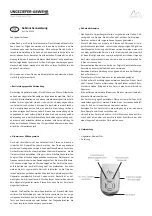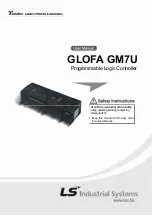
6K V1.02 03-16-91
3
coupler. Transient protection and RFI filtering is provided. The all solid-state design of the
TIM eliminates the possibility of mechanical relay failure, and the built-in electronic hybrid
allows both half-duplex and full-duplex autopatch calls. The TIM supports both regenerated
DTMF dialing and 10/20 PPS rotary dialing.
B.
SOFTWARE
a.
CW Identifier
The software CW Identifier stores remotely-programmable multiple call signs with ID Tail
Messages. The interval between identifications is also programmable. The CW is internally
mixed with repeat audio. The ID'er is "polite," which means that it attempts to identify only
during breaks between transmissions.
b.
CW Messages and Paging Formats
Most of the CW messages are remotely programmable. CW pitch and speed is
programmable, and can even be changed within a message. The CW character set
includes alphanumerics, punctuation, and a large library of "beeps." The CW amplitude
level is set with a potentiometer.
The 6K supports single-tone (group call), two-tone sequential, 5/6-tone, and DTMF paging
formats. Separate pots allow adjustment of tone paging and DTMF paging. Pages may be
stacked for convenient call-ups of ARES members, weather spotters, DX Club members,
on-the-air meetings, and so on.
c.
Timers
All timers in the 6K are derived from the microprocessor's crystal-controlled clock circuit for
improved accuracy over other methods. Most timers are remotely programmable, including
the Courtesy Timer, Dropout Timer, Timeout timer, Autopatch Timer, etc.
d.
Repeater Characteristics
The character of a repeater can be varied by choosing distinctive Courtesy Messages,
Timeout Messages, Dropout Messages, and their associated timers. The repeater can be
placed into one of several access modes, or disabled. These characteristics can be
changed by command or by a transition detected by one of the logic inputs.
e.
Clock and Calendar
A CW readout of the current time and date can be commanded. The clock can be read in
either 12-hour or 24-hour format. An additional command is used to adjust the accuracy of
the clock. (Power must be provided continuously to the controller for the clock and calendar
to stay set).
f.
Logic Inputs and Outputs
Logic inputs are used to detect a change of state in monitored devices at the repeater site.
Logic outputs can be manipulated by command to pulse, or latch, a controlled device at the





































